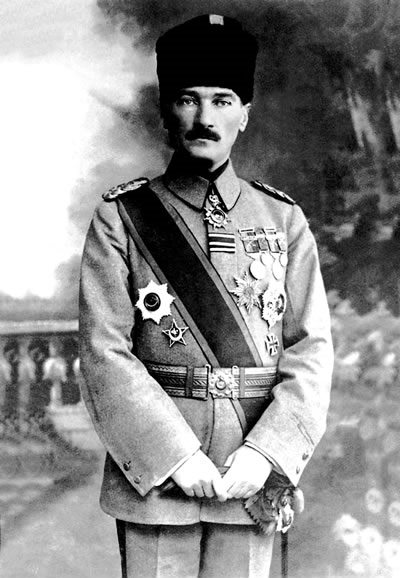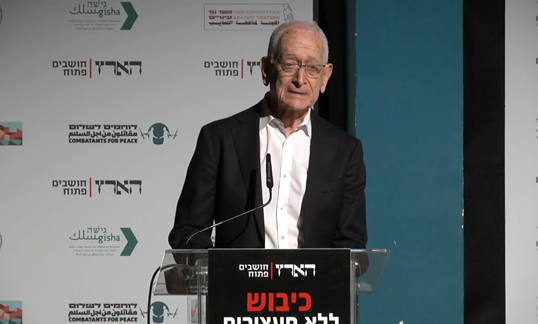The failure of the Arab Spring is just one disaster in a long list of failed movements in the Middle East stretching back to WWI.
Recent months have seen Israel launch yet another war on Hamas in Gaza, killings of Egyptian and Tunisian troops by Libyan militias, a battle for Tripoli’s airport and the flight of Iraqi Christians and Yezidis as Islamist ISIS militia threatens to massacre them • It is another page in a decade and a half of major turmoil in the region • but rather than seeing it as a temporary phenomenon, it is time to plan for an arc of continuing war and upheaval that stretches from Istanbul to Islamabad and Timbuktu

Received wisdom sees the Arab spring and its ensuing chaos as an outcome of democratization attempts inaugurated with the invasion of Iraq in 2003. Other commentators attribute it to the colonial conquest of the Middle East by the Western Powers in the 18th, 19th and 20th centuries. The BBC’s Tarek Osman, for instance, has argued that “border lines drawn with a ruler in WWI still rock the Middle East,” implying that European colonialism is the primary source of the current trouble.
It's certainly true that Western – and Eastern (Soviet Union, anyone?) – powers meddled and still meddle a great deal in the affairs of the peoples from the Atlantic to the Persian Gulf. But the roots of the chaos, violence and confusion go deeper, touching on powerful undercurrents of social anxiety and ideological ambition. Like any colonialist has learned whether they liked it or not: to rule, you must give at least certain powerful groups part of what they want, if not much of the populace. What they want started to germinate within the once-predominant force in the Muslim world – the Turkish Ottoman Empire.
Where it all began
The Ottoman Empire, which once controlled much of the Middle East and North Africa, went through a series of key reforms in the 19th century known as the Tanzimat that sought to modernize the Turkish state along European lines. It spawned secularizing and liberal movements, among them the Committee of Union and Progress which, after a coup in 1913, brought Turkey into the First World War on the side of Germany just over 100 year ago today. The CUP also experimented with ideas of pan-Turkism and got the Sultan to declare the war a “Jihad” in late 1914, making it incumbent on Muslims to join the Ottoman ranks.
The long-term effect of the Ottoman Empire's entry into the First World War was more than just to add more death and suffering in already bloody conflict. It created an origin-point for several rival movements that swept the Middle East in the 20th century and which endure to varying degrees to this day. First, pan-Turkism created a reaction among Arab subjects. Although the large majority did not actively revolt against the empire, their maltreatment at the hands of the Turks led many of them to deeply resent the Empire and look to develop a separate identity.

A small number of Arabs even openly revolted, launching the famous Arab revolt of T.E Lawrence fame, creating the royal houses of Jordan and Iraq. The Revolt's brief capture and subsequent ejection from Damascus helped solidify the French rule there which set in motion the advancement of Syria and Lebanon into balkanized states of dominant minority groups such as Maronite Christians, Druze and Alawites. This pitting of groups against each other would horribly backfire later in the century.
At the same time the Sultan, who was also “Caliph” or religious head of the empire, calls to “Jihad” had far-reaching reverberations in a brief “khalifat” movement in British India, an undertow of messianic religious tension ambition emerged. When Turkish leader Mustafa Kemal Ataturk, of whom more below, called the Caliph a “historic relic” and abolished the position in 1924, he dashed hopes that have been revived today as ISIS inaugurated a new ‘Caliph’ Abu-Bakr al-Baghdadi on June 30th in the deserts of northwestern Iraq.
Monarchies
The monarchies that arose in the Middle East in the aftermath of the First World War were, for the most part, creatures of British policy. The most obvious case was that of the sons of Jordan. A desert wasteland for the most part until the 1880s when ancient Roman Philadelphia (now Amman) was re-settled by Circassian immigrants sent there by the Ottoman sultan, it was a state full of Bedouin, including the famous Christian Bedouin tribes of Madaba. After the Hashemites were ejected from the Hijaz in the 1920s, the British helped plant King Abdallah on the throne at Amman and his brother was sent to Iraq. They worked to gain the loyalty of Sunni Bedouin tribes, and in the former cases have survived on this Bedouin pillar of support until the present.
The Gulf kingdoms were also put in place by the British but their staying power was maintained through fantastic oil wealth. Being states without any population, they imported foreign workers, who now make up majorities in most of the countries, but use oil largesse to fund modern armies. Only in the case of Bahrain did they face a Shia peasantry that was not happy, and there the monarchy has been resilient in the face of opposition. Similarly in Saudi Arabia the Wahhabist extremism of the Saud family, once considered a heretical form of Islam, despite its pretensions of piety, has held onto power mostly through oil money and Western support. The only other monarchy to emerge was in Morocco, a kingdom that traces its lineage back centuries.
The kingdoms work together as conservatives, they were allied with the West against Communism and have paid lip service to fighting al-Qaeda because of the fears they have over its appeal to the commoners of the street. In the aftermath of the Iranian revolution they banded together to bankroll Saddam Hussein’s Iraq as a “shield of the Arabs” and some struggled with their own Shia internal problems like Saudi’s restive Qatif region.
Their attempts to prop up monarchies in Yemen, Iraq and Libya, as well be shown below, have proved failures, but they have shown true resilience in the face of a changing world. Nevertheless they are reactionary failures: Saudi was responsible for birthing al-Qaeda, and Qatar now helps support Sunni radicalism in Syria, as well as Hamas. To put it mildly, they do not want what is best for other Arab countries, and often prey on the misery of Arabs, such as the case of Saudi sheikhs purchasing teenage brides in Syrian refugee camps in Jordan. Like the ancien regime in Europe in the 18th and 19th centuries, they retard reform and encourage conservative extremism.

Secularism
The most enigmatic of the movements to emerge in the region in the wake of the wreckage of the Great War was the secularist tendency embodied by Ataturk. His modernization borrowed from the CUP’s own decision to centralize power in a one party state in 1913. Like them, Ataturk enforced his policy partly at the end of a bayonet. His movement inspired many others in the region.
The ostensibly secular and Arab nationalist regimes that emerged in the 1950s and 60s in Gamal Nasser’s Egypt and Habib Bourguiba’s Tunisia brought about far reaching reforms, epitomized by such revolutionary works as George Antonius’ The Arab Awakening and Fouad Ajami’s Dream Palace of the Arabs, but at the expense of democracy. Brutality followed the rise to power of the secular Ba’ath movements in Syria in 1963 and Iraq in 1968.
Similar experiments took place in Afghanistan, Pakistan, Libya, Iran and South Yemen. Locals who lived through these periods and their descendants who often reside in self-imposed exile in the West, still pass around photos of bikini clad Arab women in places like Yemen; short skirts in Kabul and Tehran, and classrooms full of university women with their hair uncovered. They wax poetic about the diversity of the region: Chaldean and Nestorian Christians in Baghdad, Maltese and Armenians and Alexandria, Buddhists in Afghanistan and Sikhs in Pakistan and of course large Jewish communities across the region until they virtually disappeared in the 1960s. But then the Arab Spring came.

After the Arab Spring
The outcome of the Arab Spring was to wash away the “nationalist” Arab regimes and replace them with chaos, extremism and death. What the West and other major powers must realize is that ISIS represents not an end self-cannibalizing of radical extremism; but a force that will continue to shape weakened regimes from Morocco to Pakistan; states such as Yemen and Afghanistan will continue to weaken.
This isn’t a new “dark age”, or as scholar Bernard Lewis termed it, a time to ask “what went wrong,” notions that see the Middle East’s history only in relation to Europe. The paradigms of the 1990s and 2000s, through which policy-makers argued about a “clash of civilizations” or “Jihad vs. McWorld” fail to grasp the long term hundred year cycle that came to a close. It isn’t a question as simple as drawing new borders not based on the colonial era. Instead world leaders must take the responsible step of accepting a Middle East that doesn’t neatly fit into a model they want, and facing the reality of long-term instability that may outlast this century.
To be sure, the West underwent similar catastrophes such as the Second World War. But the trajectory was towards quick rebuilding and economic integration, not more chaos. Iraq has spent more than a decade in total chaos, similarly Libya and Syria. Algeria never really recovered from the trauma of the 1960s and civil war of the 1990s. In many cases the best and brightest or secular moved to Europe, only be followed by Anatolian peasants and Islamists (ironically they were persecuted back home and offered ‘asylum’ in Europe). Their children growing up in the banlieues of Paris didn’t create a new generation of Arab and Muslim thinkers and reformers. The theory once heard in the West that “Islam needs a reformation like the Catholic Church went through,” never came to fruition.
The royal Arab regimes, meanwhile, have become the big winners of the Arab Spring. Considering the general trajectory of the world they should be anachronisms. But they are not. Qatar has won hosting of the World Cup, it runs Al-Jazeera. They import the Louvre and NYU and Western museums like the Guggenheim, while using a 19th century form of virtual slavery to run it all. It would be like if the Old South had not only won the US Civil War but prospered. That is another sign of the 100 years of failure; royal regimes relying on forms of Apartheid were supposed to go away, not flower with success.
The only lesson for policy makers in the Middle East is to prepare for another 100 years of chaos. Western policymakers have been looking for quick fixes to long term symptoms. A bombing here to keep ISIS out of Erbil, some weapons there, some medical supplies. But when one looks at the region one finds a lack of lasting vision among local leaders and a lack of interest in broad sweeping changes among local elites, as well as a deeply conservative society who will cooperate with any tyranny so long as their institutions are left intact. A hundred years of failure will likely be followed by 100 years of stagnation, war and implosion.
To receive updates on new articles in English, join Mida on Facebook or Twitter or join our mailing list.






This is not the worse that can happen in fact it is the best because if islam becomes "civilised" the way germans were in the thirtees, IT WOULD BE WORSE. Let us hope they remain as long as possible what they are right now even if it is not to the liking of those who wish a better future for them…